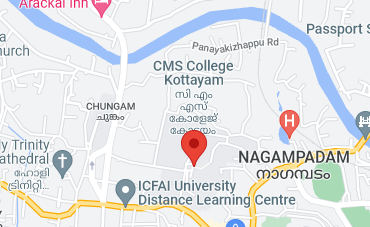(Semester – III)
CH3 B01 – Fundamentals of Organic chemistry
Credits – 3 (54 hours)
Aim
To promote understanding of basic facts and concepts and to inculcate interest in Organic chemistry.
Objectives
To have a basic understanding about the classification and nomenclature of organic compounds, fundamentals of organic reaction mechanism, aromaticity and stereochemistry
To make students capable of understanding and studying organic reactions To have exposure to various emerging new areas of organic chemistry
To develop skills required for the qualitative analysis of organic compounds
- Classification and nomenclature of organic compounds (4 hrs)
Classification of organic compounds
Rules of IUPAC system of nomenclature of common organic compounds –alkanes, alkenes, alkynes, cycloalkanes, bicycloalkanes, alkyl halides, alcohols and phenols. Aldehydes, ketones, carboxylic acids and its derivatives, amines, nitro compounds. (Both aliphatic and aromatic)
References
- L. Finar Organic Chemistry -, 6th Edition. Vol.- I, Pearson Education (p-26,70,93,131,531, 145,176, 202, 223,245,256,367,360,571)
- K. Jain and S. C. Sharma ‘Modern Organic Chemistry’ 3rd Edition, Visal Publishing Company Co. (p.92-112)
- S. Tewari and N. K. Vishnoi ‘Organic Chemistry’, 3rd Edition, Vikas Publishing House(Chapter 3).
- C. Pal, Nomenclature of Organic Compounds, Narosa Publishing Company
FurtherReading
- Y. Bruice, ‘Organic Chemistry’ – 3rd Edn. Pearson Education. (Chapter-1)
- N. Pillai ‘Organic Chemistry’ Universities Press.
- Fundamentals of organic reaction mechanism (15 Hrs)
Meaning of reaction mechanism
Drawing electron movements with arrows- curved arrow notation. Half headed and double headed arrows. Nature of bond fission – Homolytic and Heterolytic. Types of reagents – Electrophiles and Nucleophiles.
Types and sub types of following organic reactions with definition and at least one example of each- Substitution, Addition, Elimination and Rearrangement.
Reactive intermediates with examples – Carbocations, Carbanions and Free radicals. Electron displacement effects – Inductive, inductomeric, electromeric, mesomeric, resonance, hyper conjugation and steric effects.
Aliphatic nucleophilic substitutions, mechanism of SN1,SN2- effects of structure-substrate, solvent, nucleophile and leaving groups – Stereochemistry- Walden inversion Elimination Reactions:-Hoffmann and Saytzeff rules- cis and trans eliminations – mechanisms of E1 and E2 reactions. Elimination versus substitution.
Addition reactions- mechanisms of addition of Bromine and hydrogen halides to double bonds-Markownikoff’s rule and peroxide effect
Polymerisation reactions-Types of polymerisation – free radical, cationic and anionic – polymerisations –including mechanism .
References
- Peter Sykes, A Guide book to Mechanism in Organic Chemistry : 6th Edition, Pearson Education. (chapters 1,4,5,6,7,8,9,10)
- S. Kalsi’ ‘Organic Reactions and their Mechanisms’ New Age International Publishers. (Chapters- 4, 5,11,12,16)
- S. Tewari and N.K. Vishnoi ‘Organic Chemistry’, 3rd Edition, Vikas Publishing House. (Chapter 5)
- K. Jain and S.C. Sharma ‘Modern Organic Chemistry’, 3rd Edition, Vishal Publishing Company Co. (Chapter 3,4)
- T. Morrison and R. N. Boyd, ‘Organic Chemistry’, 6th Edition – Prentice Hall of India( Chapters-5,8,9).
- L. Finar Organic Chemistry, 6th Edition. Vol.- I, Pearson( chapters-4,5,20,21)
Further Reading
- March, ‘Advanced Organic Chemistry’, IV Edn, John Wiley & Sons, NY,
- M. Mukhergi and S.P. Singh ‘Reaction Mechanism In Organic Chemistry’, Macmillan
- Reinhard Bruckner, ‘Advanced Organic Chemistry’ Elsevier
- Clayden, N. Greeves, S. Warren and P. Wothers, Organic Chemistry, Oxford University Press
- K.Ahluwalia, Green Chemistry, Ane Books India.
- Stereochemistry of organic compounds (15 hrs)
Stereoisomerism – definition – classification into optical and geometrical isomerism
Projection formulae – Fischer, flying wedge, sawhorse and Newman projection formulae – notation of optical isomers -D-L notation- Cahn-Ingold-Prelog rules – R-S notations for optical isomers with one and two asymmetric carbon atoms – erythro and threo representations.
Optical isomerism – optical activity – optical and specific rotations – conditions for optical activity – asymmetric centre — chirality – achiral molecules – meaning of (+) and (-) Elements of symmetry -. Racemisation – methods of racemisation (by substitution and tautomerism) – Resolution – methods of resolution (mechanical, seeding, biochemical and conversion to diastereoisomers) – Asymmetric synthesis (partial and absolute synthesis).
Optical activity in compounds not containing asymmetric carbon atoms- Biphenyls.
Geometrical isomerism – cis-trans, syn-anti and E-Z notations – geometrical isomerism in maleic and fumaric acids and unsymmetrical ketoximes – methods of distinguishing geometrical isomers using melting point, dipole moment, dehydration and cyclisation
Conformational analysis – introduction of terms – conformers, configuration, dihedral angle, torsional strain – Conformational analysis of ethane and n-butane including energy diagrams – conformers of cyclohexane (chair, boat and skew boat forms) – axial and equatorial, Bonds-ring flipping showing axial equatorial interconversions, conformation of methyl cyclohexane.
References:
- T. Morrison and R.N Boyd, ‘Organic Chemistry’, 6th Edition – Prentice Hall of India. (Chapters-4,13)
- L. Finar, ‘Organic Chemistry ’- Vol.- 6th Edition I, Pearson Education (Chapters-3,4,17)
- K. Jain and S.C. Sharma ‘Modern Organic Chemistry’, 3rd Edition, Vishal Publishing Company Co. (Chapters-6,7)
- S. Tewari and N. K. Vishnoi ‘Organic Chemistry’, 3rd Edition, Vikas Publishing House. (Chapter-6)
Further Reading
- Nasipuri ‘Stereochemistry of Organic Compounds’, New Age International
Publishers
- S. Kalsi’ ‘Stereochemistry, Conformation and Mechanisms’’ New Age International Publishers.
- N. Pillai ‘Organic Chemistry’ Universities Press.
- Y. Bruice, ‘Organic Chemistry’ – 3rd Edn. Pearson Education.
- Clayden, N. Greeves, S. Warren and P. Wothers, Organic Chemistry, Oxford University Press
- Aromaticity (15 Hrs)
Concept of resonance- resonance energy. Heat of hydrogenation and heat of combustion of Benzene, mention of C-C bond lengths and orbital picture of Benzene. Structure of naphthalene and anthracene (Molecular Orbital diagram and resonance energy)
Concept of aromaticity – aromaticity (definition), Huckel’s rule – application to Benzenoid -Benzene, Naphthalene- and Non – Benzenoid compounds -cyclopropenyl cation, cyclopentadienyl anion and tropylium cation.
Reactions – General mechanism of electrophilic substitution, mechanism of halogenation, nitration, Friedel Craft’s alkylation and acylation. Orientation of aromatic substitution –
Definition of ortho, para and meta directing groups. Ring activating and deactivating groups with examples -Electronic interpretation of various groups like NO2 and Phenolic-Orientation of (i). Amino, methoxy and methyl groups (ii). Carboxy, nitro, nitrile, carbonyl and sulfonic acid groups. (iii). Halogens.(Explanation by taking minimum of one example from each type is required).
Reactivity of naphthalene towards electrophilic substitution. Nitration and sulfonation
Aromatic Nucleophilic substitutions- bimolecular displacement mechanism- Elimination
–addition mechanism-Reactivity and orientation in Aromatic Nucleophilic substitutions.
References:
- T. Morrison and R.N Boyd, ‘Organic Chemistry’, 6th Edition – Prentice Hall of India. (Chapters- 15,26)
- L. Finar, ‘Organic Chemistry ’- Vol.- 6th Edition I, Pearson Education (chapters-20,21)
- K. Jain and S.C. Sharma ‘Modern Organic Chemistry’, 3rd Edition, Vishal Publishing Company Co. (Chapters- 14,15,16)
- S. Tewari and N. K. Vishnoi ‘Organic Chemistry’, 3rd Edition, Vikas Publishing House, (Chapter- 11,12,)
- Peter Sykes, A Guide book to Mechanism in Organic Chemistry , 6th Edition, Pearson Education (chapter 6
Further Reading
- S. Kalsi’ ‘Organic Reactions and their Mechanisms’’ New Age International
Publishers. (Chapters-4,5,11,12,16)
- H. Pine ‘Organic Chemistry’ – – McGraw Hill
- March, ‘Advanced Organic Chemistry’, IV Edn, John Wiley & Sons, NY,
- Paula Y. Bruice, ‘Organic Chemistry’ – 3rd Edn. Pearson Education.
- Clayden, N. Greeves, S. Warren and P. Wothers, Organic Chemistry, Oxford University Press
5. Pericyclic Reactions (5 hrs)
Classification- electrocyclic, sigmatropic, cycloaddition reactions.
Claisen rearrangement -Diels_Alder reation- . Stereochemical aspects.
References:
- Sykes, A Guide book to Mechanism in Organic Chemistry, 6th Edition, Orient Longman(Chapter-12 and p.198)
- S. Kalsi’ ‘Organic Reactions and their Mechanisms’’ New Age International Publishers. (Chapter-17)
- K. Jain and S. C. Sharma ‘Modern Organic Chemistry’, 3rd Edition, Vishal Publishing Company Co.(Chapter -47)
- Y. Bruice, ‘Organic Chemistry’ – 3rd Edn. Pearson Education. (Chapter-28)
Further Reading
- Bruckner, ‘Advanced Organic Chemistry’ Elsevier
- March, ‘Advanced Organic Chemistry’, IV Edn, John Wiley & Sons, NY
- H. Pine ‘Organic Chemistry’,McGraw Hill
- Clayden, N. Greeves, S. Warren and P. Wothers, Organic Chemistry, Oxford University Press
Practical: CH3B01– Qualitative Organic Analysis
Credit -1 (36 hrs)
- Tests for elements: Nitrogen, Halogens and Sulphur
- Tests for unsaturation.
- Tests for aromatic character.
- Study of the reactions of the following functional groups: alcohol, aldehyde, ketone, carboxylic acid, 1,2 dicarboxylic acid, ester, primary and secondary amines
- Systematic analysis of the following organic compounds containing one functional group and characterization with a derivative.- alcohol, aldehyde, ketone, carboxylic acid, 1,2 dicarboxylic acid, ester, primary and secondary amines.
(Minimum eight compounds to be analysed)
References
- ‘Vogel’s Textbook of Practical Organic Chemistry’ Pearson Education
- G. Mann and B. C. Saunders, ‘Practical Organic Chemistry’ Fourth Edition,
PearsonEducation.
- K.Ahluwalia and S. Dhingra ‘ Comprehensive Practical Organic Chemistry’ Universities Press.

